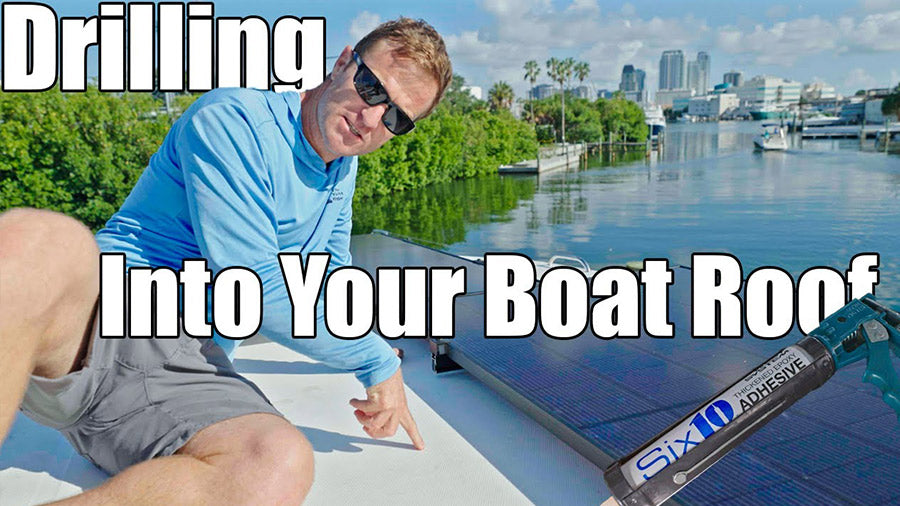Drilling through fiberglass—especially when dealing with a cored deck—requires more than just grabbing a drill and getting to work. Done wrong, it can lead to serious long-term damage like core rot, delamination, or even spider cracking around your fittings. In this guide, we’ll walk you through the right way to drill and mount hardware on fiberglass decks, particularly when dealing with a composite structure like foam or plywood sandwiched between fiberglass layers.
Understanding the Structure
When you hear “cored deck,” think of a sandwich. You’ve got:
-
A top layer of fiberglass (often finished with gel coat)
-
A core material (usually foam or sometimes plywood)
-
A bottom fiberglass layer
This layered structure adds strength without excess weight—but it also means that any water intrusion into the core can cause significant long-term issues like rot or delamination. That’s why proper sealing and through-bolting technique is essential.
Step-by-Step: Proper Through-Bolting on a Cored Deck
1. Drill an Oversized Hole
Before mounting any fitting, you’ll want to drill an oversized hole that goes completely through the top fiberglass, core, and bottom layer. For example, if you’re planning to use a 5/16" bolt, consider drilling a 5/8" or even 3/4" hole.
2. Tape Off the Bottom
Tape off the underside of the hole to contain the epoxy during the next step. You don’t want it dripping out or running all over your workspace.
3. Fill with Thickened Epoxy
Inject thickened epoxy (we like using something like West System’s Six10 with a mixing nozzle for easy application) into the oversized hole. Fill it flush with the deck surface, then let it cure for 24 hours.
4. Drill the Final Hole
Once the epoxy has cured, drill a properly sized hole through the center of the epoxy plug for your actual fastener. This creates a sealed, solid mount point that prevents water intrusion into the core and protects against over-compressing the deck when tightening hardware.
Why This Matters
1. Prevents Water Damage
If your sealant ever fails, water can only reach the epoxy—not the vulnerable core. That’s your insurance policy against hidden deck rot.
2. Avoids Over-Compression
Without this method, tightening a bolt too hard can crush the core. The cured epoxy acts as a barrier, so your bolt tightens against a solid, durable surface.
Real-World Example: Solar Panel Mounts
When mounting solar panels on our deck, we followed this exact method:
-
Marked out the bracket positions
-
Drilled pilot holes
-
Over-drilled for the epoxy
-
Taped off the underside
-
Injected thickened epoxy and let it cure
-
Drilled the final center holes
-
Applied adhesive sealant (like CT1)
-
Mounted and tightened the fittings
The result? A safe, strong installation with long-term peace of mind.
What About Solid Fiberglass?
If you’re working with solid fiberglass (no core), the process is simpler—but not without its own precautions:
-
No need for epoxy—there’s no core to protect.
-
Still, seal all fasteners well to prevent water intrusion.
-
Always countersink the hole slightly to prevent spider cracks and give the sealant a good bedding area under the fastener head.
Final Thoughts
Drilling and bolting through fiberglass is a task where a little extra effort goes a long way. If you're working with a cored deck, remember: oversize, epoxy, seal, and drill again. Done right, your fittings will last for years without damaging the structure of your boat or project.
Stay tuned for more fiberglass drilling tips in our “How-To” series, including how to countersink properly for solid fiberglass applications.





